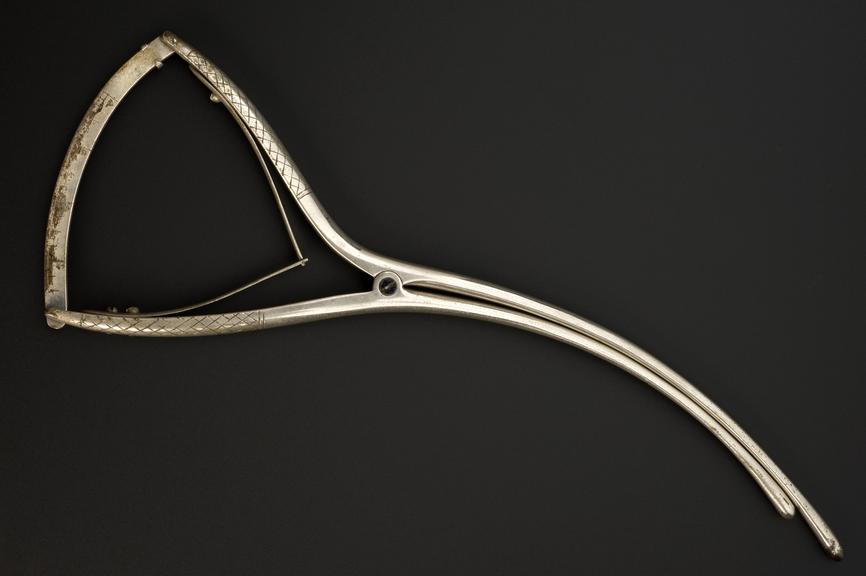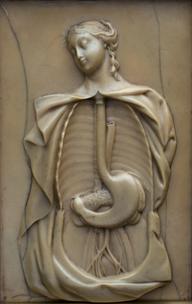





Earle's pelvimeter, with parallel blades pivoted from tension spring handles with distal imperial scale, steel, circa 1850, by Wood(?)
A pelvimeter measured the pelvic diameters of pregnant women. Compression of the ebony handles opened the blades. This allowed measurements to be read off the sliding scale. This was part of a scientific attempt to identify those women most likely to experience obstructed labour. The technique is called pelvimetry. It was developed during the late 1700s by Frenchman Jean Louis Baudelocque (1746-1810). This pelvimeter was designed by Dr Earle of Birmingham. It was made by instrument maker Wood.
Details
- Category:
- Obstetrics, Gynaecology & Contraception
- Collection:
- Sir Henry Wellcome's Museum Collection
- Object Number:
- A615339
- Materials:
- steel
- Measurements:
-
overall: 95 mm x 207 mm x 10 mm, .14kg




